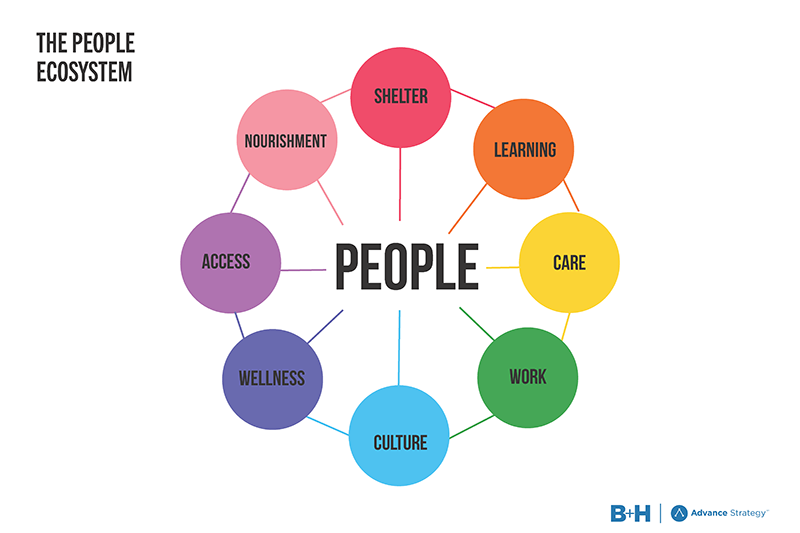We are redefining “age.” It is no longer a strong predictor of professional experience, personal or economic situation, or much of anything at all. How we progress through our lives is no longer the universal experience.
In a global market where the intersections of age and experience are fluid, how do we create spaces that serve everyone? How can we use the new social context to better create environments that support human lives at all ages, and engage clients in co-creating their own experiences?
We explored these issues in our workshop at the 2019 Environments for Aging (EFA) conference and it led to a very different conversation about what an “environment for aging” is.
How Can We Rethink Aging?
Before we discuss environments, it's important that we have a common understanding of aging.
Our understanding of the process has evolved. Evidence from social media reveals that conversations around the subject grow more positive as people move further along in life. Happily, the stereotype of older generations mired in how things used to be, unwilling to change, and uninterested in participating in the larger world, is no longer as prevalent as it once was. As information has become more accessible, growing older has become less isolating, and that has changed how older people interact and experience the world.
Aging today is an opportunity to find new ways to participate in and explore the world, often with the help of technology. It's now possible to "travel" using VR headsets or exercise in powered mobility suits. Even cooking or sampling new cuisines is made easier through online ordering systems and subscription services.
Gina Pell of The What, in her article for FastCompany, calls people taking advantage of these new technologies to age differently "perennials". She defines them as “ever-blooming, relevant people of all ages who live in the present time, know what’s happening in the world, stay current with technology, and have friends of all ages.”
As the fastest-growing population of workers, with twice as many seniors as teenagers currently employed in the US, perennials are also powerful consumers. Where so much attention is placed on millennials as the perceived tastemakers and new economy-movers of the world, ABA Bank Marketing instead suggests that “attitudes and habits that are widely thought to be millennial-specific may actually be quite widespread among the general population.”
The divisions between generations are simply less of a barrier now than they have been in the past, largely thanks to technology. Older and younger generations share many of the same opinions, behaviors, and experiences because they now have more common resources and outlets.
For companies hoping to gain new audiences, customers, or employees, it pays to think deeply about creating the types of environments where humanity — and our collective experiences and needs — can thrive.
A Holistic Approach to Human Needs
People share the same needs at every age, though sometimes with a few differences in access or consumption. Any successful environment must take this into consideration.This is a powerful lens for evaluating solutions holistically, rather than only fixing a symptom of a wider problem.
During our workshop at the Environments for Aging 2019 conference, we encouraged participants to use this lens as they completed an exercise. We asked participants to write down words or short phrases that they associated with their customer experience in each facet of the people ecosystem below illustrated below, both for their current state and for an aspirational future state:

Their present customer experience painted a bleak picture, loaded with negative impressions and associations:
- 35% reported feelings of confusion
- 20% associated it with isolation, lack of trust, and fear of the system
- 15% cited lack of accessibility
In completing these exercises, however, it also became apparent that our participants experienced common themes in their hopes and aspirations for the future. We saw in their responses specific words repeated across all aspects of the ecosystem: community, connection, integration, tech, collaboration, and choice.
This exercise illustrated for us how deeply disconnected the experience is between customer's current reality and what they hope for in the future. It also gave us further insight into how people at every age want the environments they occupy to support greater sharing, cooperation, and advancement.
With such a population that will always continue to grow and age (even as our ideas of age and aging are redefined), it’s important to find opportunities for solutions that emphasize social and emotional connections for everyone, at every age.

